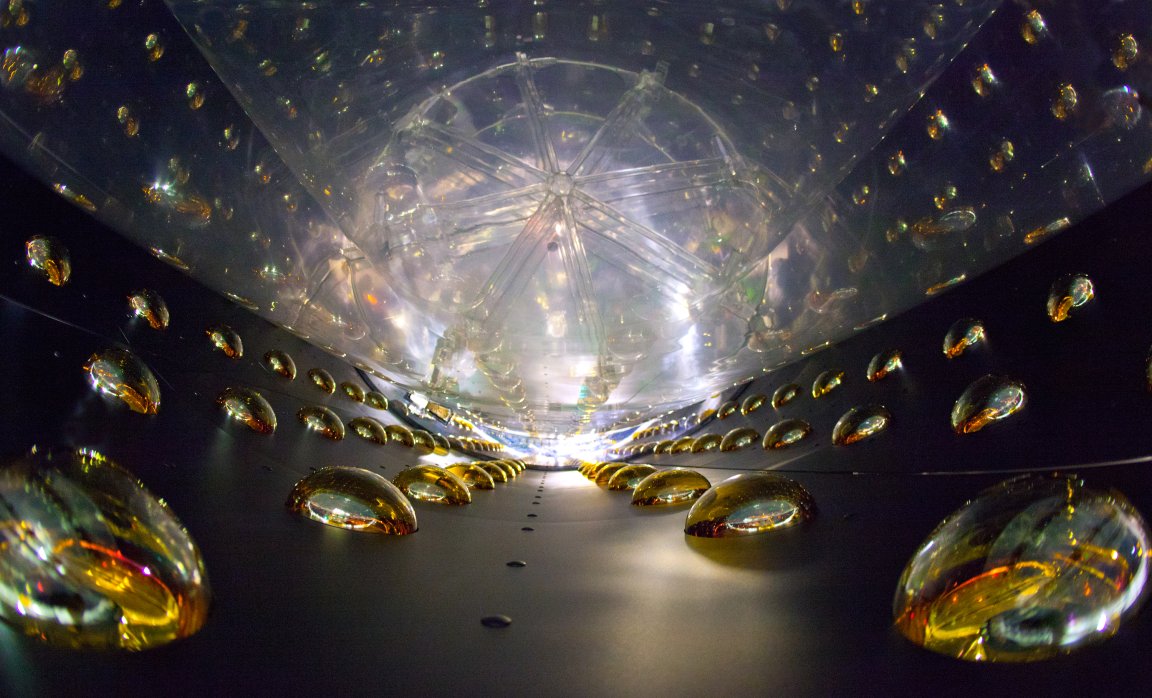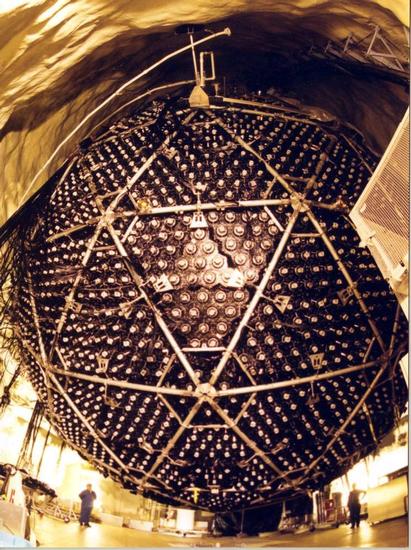
Prize Worthy
Early Tuesday morning, the Nobel Committee announced that two scientists, Takaaki Kajita of Japan and Arthur McDonald of Canada, won the Nobel Prize in physics for their experiments in neutrino detection.

Kajita and McDonald led two teams (at observatories on opposite sides of the planet, no less) to detect elusive neutrino particles and solve a longstanding problem in particle physics.
McDonald, a professor at Queen’s University in Kingston, said that winning the Nobel was “a very daunting experience.” “Fortunately,” he added, “I have many colleagues as well, who share this prize with me. [It’s] a tremendous amount of work that they have done to accomplish this measurement.”
Kajita, a professor at the University of Tokyo, said winning the prize was “kind of unbelievable.” “I think the significance is – clearly there is physics that is beyond the Standard Model,” he added.
What Are Neutrinos?
Neutrinos are small elementary particles that are formed inside nuclear reactions, such as the fusion reactions inside the Sun or the fission reactions inside our nuclear power plants. These particles aren’t affected by gravity or electromagnetism, which makes them “weakly interacting” particles. Even though trillions of neutrinos are emitted by the Sun each second, and billions reach the Earth, nearly all pass right through the planet without hitting anything.
Because neutrinos pass through almost everything, finding them is very complicated. Gigantic particle detectors are built deep underground to avoid interference from cosmic rays produced in the atmosphere. These detectors consist of several large tanks of water, with sensors continually watching for a single interaction with a neutrino. The hope is that, of the billions of neutrinos that pass through the water tanks, a few might hit the nucleus of a water atom, which gives off enough radiation to be picked up by the sensors.

The Solar Neutrino Problem
Neutrinos come in three flavors: electron, muon, and tau neutrinos. Electron neutrinos are the most common, and they’re the ones produced in the center of the Sun. Because we know the extent of the Sun’s fusion reactions, we can estimate how many electron neutrinos the Sun should produce each second.
But when we compare that estimate with our neutrino measurements here on Earth, we come up short.
The amount of solar neutrinos detected on Earth is only about a third of what it should be, and for a long time, scientists were stumped.
A possible answer came in the late 1990’s, when a number of scientists suggested the problem arose because of neutrino oscillation, a process by which one flavor of neutrino, like electron, spontaneously transforms into another kind, like muon or tau. Our solar neutrino detectors on Earth are only set up to detect electron neutrinos, so if two-thirds of the solar neutrinos had transformed by the time they reached us, we would only detect a fraction of them.
In 1998, a team led by Kajita at the Super-Kamiokande detector provided the first concrete evidence of neutrino oscillation. The team measured the number of muon neutrinos formed in the atmosphere, both directly above the detector and coming from the opposite side of the Earth. The team found that it could detect significantly fewer neutrinos passing through the Earth, thousands of miles away, than from directly overhead. What this showed is that, somewhere along the way, many of the muon neutrinos were disappearing, and the best explanation was neutrino oscillation.
The conclusive evidence came from McDonald’s Sudbury Neutrino Observatory, which was the first solar neutrino detector that could detect muon and tau neutrinos, in addition to electron neutrinos. The team at Sudbury quickly found evidence of the other two flavors, confirming that neutrinos from the Sun did in fact transform on their way here.
In short, this result cemented the idea of neutrino oscillation within the physics community.
This year’s Nobel Prize brings the total number of physics laureates to 201. On Monday, the Nobel Committee announced the Nobel Prize in Physiology or Medicine went to William Campbell and Satoshi Ōmura, for their work on anti-parasitic drugs. On Wednesday, the Committee will announce the winners of the Nobel Prize in Chemistry.